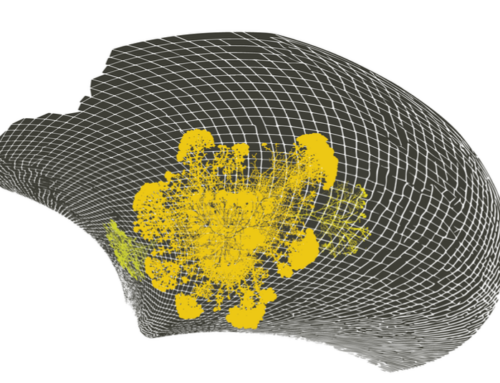Here are ten stories on all things mobility that I probably posted too soon. They seem to be resonating more now than when they were written.
Is Peak Car Headed For Seneca’s Cliff? (2017)
Sharing platforms enable new relationships between people, goods, equipment, and spaces. The consequence? The notion of mobility as a discrete economic sector no longer makes sense. News that Ikea is buying Task Rabbit is further confirmation of this convergence.
From Bike Chain to Blockchain: Three Questions About Cooperation Platforms and Mobility (2015)
Until now, transportation has been planned to ‘save’ time. In this age of energy transition, would a better criterion not be, how to save calories? Who should own mobility sharing platforms: private companies? cities? us? What kind of ecosystem is needed to support the sharing platforms we want?
Cycle Commerce: the Red Blood Cells of a Smart City (2015)
India’s many millions of bicycle and rickshaw vendors embody the entrepreneurship, sustainable mobility, social innovation, and thriving local economies, that a sustainable city needs. As an ecosystem, they’re also part of the metabolism that makes a city smart. That said, cycle commerce is a challenge for a city’s managers. Many different actors are involved in bicycle commerce – often with differing or downright conflicting agendas. Managing this kind of urban constellation is hard.
Cloud Commuting (2014)
A two-year project in Belgium proposes new relationships between people, goods, energy, equipment, spaces, and value. Its design objective: a networked mobility ecosystem. Mobilotoop asks, ‘how will we move in the city of the future?’ – and does not worry too much about the design of vehicles. ‘Cloud commuting’, in this context, is about accessing the means to move when they are needed (such as the micro-van, above) rather than owning a large heavy artefact (such as a Tesla) that will sit unused for 95 percent of the time.
Caloryville: The Two-Wheeled City (2014)
Something big is afoot. E-bikes in China are outselling cars four to one. Their sudden popularity has confounded planners who thought China was set to become the next automobile powerhouse. In Europe, too, e-bike sales are escalating. Sales have been growing by 50% a year since 2008 with forecasts of at least three million sales in 2015.
Cycle commerce as an ecosystem (2013)
At a workshop in Delhi, Arjun Mehta and myself posed the following question to a group of 20 professionals from diverse backgrounds: What new products, services or ingredients are needed to help a cycle commerce ecosystem flourish in India’s cities, towns and villages?
Green Tourism: Why It Failed And How It Can Succeed (2013)
Packaged mass tours account for 80 percent of journeys to so-called developing countries – but destination regions receive five percent or less of the amount paid by the traveller. For local people on the ground, the injustice is absurd: if I were to pay €1,200 for a week long trek in Morocco’s Atlas mountains, just €50 would go to the cook and the mule driver who do the work. The mule, who works hardest, gets zilch. Can green travel be reformed?
From Autobahn to Bioregion (2012)
A few years ago, Audi’s in-house future watchers noticed an unsettling trend in visions for the future of cities : an increasing number of these visions did not contain cars. Urban future scenarios seemed to be converging around car-free solutions to problems posed by debilitating gridlock, lack of space, and air pollution. Wondering what this trend meant for a car company such as itself, the company launched its Urban Future Initiative to establish a dialogue.
The Gram Junkies (2011)
Gram junkies are those fanatical hikers and climbers who fret about every gram of weight that might be carried — in everything from titanium cook pans to toothbrush covers. Excess weight is not just an objective performance issue for these guys; they take it personally. In the matter of mobility and modern transportation, we all need to become gram junkies. We need to obsess not about speed, or about exotic power sources, but about the weight of every step taken, every vehicle used, every infrastructure investment contemplated.
Is an environmentally neutral car possible? (2010)
The future of the car has been electric for what? Five years now? Ten? The answer is 110 years, for it was back in 1899 that La Jamais Contente (The Never Satisfied) became the first vehicle to go over 100 km/h (62 mph) at Achères, near Paris. Since then, as we produced hundreds of millions non-electric cars — and spoiled the biosphere in the process — all manner of non-petrol cars, including electric ones, have come and gone.
A tale of two trains October (2010)
The fundamental problem with high-speed train systems is not that they burn too much of the wrong kind of fuel. The problem is that – like the interstate highway systems that came before – they perpetuate patterns of land use, transport intensity, and the separation of functions in space and time, that render the whole way we live unsupportable.
From my car to scalar (2006)
To a car company, replacing the chrome wing mirror on an SUV with a carbon fibre one is a step towards sustainable transportation. To a radical ecologist, all motorised movement is unsustainable. So when is transportation sustainable, and when is it not?





